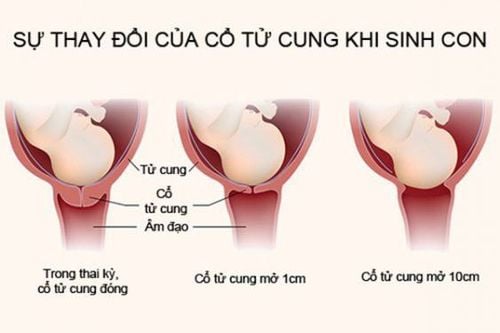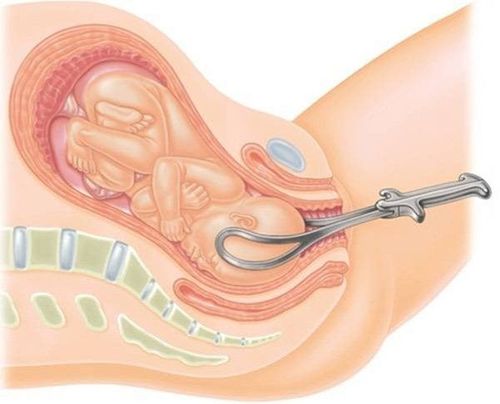This is an automatically translated article.
The article is professionally consulted by Specialist Doctor Department of Obstetrics and Gynecology - Vinmec Hai Phong International General Hospital.
Labor happens very quickly and smoothly, but many women have to go through a difficult birth with a long labor period. The birth of a baby depends on many factors, including the duration of labor.
1. Normal labor process
1.1. How long does labor last? The time of labor in pregnant women with children is longer than that of chickens.
Women who have had a second child (first labor) usually go into labor between 12 and 18 hours. Meanwhile, mothers who have given birth to children with chickenpox, labor only takes about 8-12 hours.
Pre-labor is the period before actual labor, which can last a few weeks.
Pregnant women may have symptoms such as: frequent urination, increased vaginal discharge, uterine contractions, but the degree is sparse, mild intensity and no obvious pain. In addition, pregnant women may also feel pain in the pelvic joints.
1.2. False labor During the last few weeks of pregnancy, most women experience mild uterine contractions before actual labor. These contractions are called Braxton Hicks contractions or false labor.
Unlike true labor , false labor can be:
Intense or mild, usually appearing in the anterior abdomen and pelvic region Appears suddenly and disappears, not consecutive, neither increasing nor increasing strengthens over time. May decrease with change of position. Do not dilate the cervix. 1.3. Signs of true labor True labor when 3 out of 5 of the following criteria are met:
Increasing abdominal pain. Pink vaginal discharge. There is a change in the uterine cavity (cervical dilation and dilation). The amniotic sac is established. There is progression of fetal position after each uterine contraction.

2. Prolonged labor
2.1. What is prolonged labor? Sometimes, labor is slower than usual. Prolonged labor is a condition in which a baby has not been born after 20 hours of contractions of the uterus.
Some doctors think prolonged labor is when there is a labor time of 18 to 24 hours.
2.2. Causes of prolonged labor Pregnant women are more likely to have prolonged labor if:
The baby is too big and cannot pass through the vagina. The baby is in an unusual position. Usually the baby will be born in the head-first position and facing the mother's back. The vaginal canal is too small for the baby to get through. Uterine contractions are too weak.
Trắc nghiệm: Thế nào là trẻ sơ sinh đủ tháng?
Đặc điểm bên ngoài của trẻ sơ sinh đủ tháng được thể hiện qua các tiêu chuẩn như: Cân nặng, chiều dài và hình thể. Theo dõi bài trắc nghiệm dưới đây sẽ giúp các bậc cha mẹ hiểu thế nào là trẻ sơ sinh đủ tháng, qua đó có thể đánh giá tổng trạng sức khỏe và sự phát triển của bé yêu nhà mình.The following content is prepared under supervision of Thạc sĩ, Bác sĩ y khoa, Ma Văn Thấm , Nhi , Phòng khám Đa khoa Quốc tế Vinmec Dương Đông(Phú Quốc)
2.3. Risks of prolonged labor Prolonged labor increases the likelihood of a cesarean section and can pose risks to the baby and mother such as:
Lack of oxygen to the baby, suffocating the baby in the uterus Fetal heartbeat abnormality Produce abnormal substances in amniotic fluid Infection of the uterus and reproductive tract. 2.4. How to deal with prolonged labor When evaluating a pregnant woman in prolonged labor, the medical staff will check:
Frequency of contractions The degree of contractions. Measure the fetal heart rate with an electronic monitor. In addition, pregnant women may have an Intrauterine Pressure Catheter Placement - a small tube that will be placed inside the uterus, next to the baby, to help the doctor monitor the timing and intensity of the contractions. contractions to take timely measures to assist in childbirth. At this time, pregnant women should rest a lot. Sometimes taking pain relievers or changing your lying position can help relieve pain and make you more relaxed.
The monitoring on the machine is very important for the health of mother and baby to decide on treatment measures. The appropriate treatment depends on the cause of the prolonged labor.
If the baby is already in the vagina, the doctor or midwife can use aids such as forceps or suction cups to remove the baby from the vagina. If your contractions are weak, your doctor may use "command labor" to help you by injecting oxytocin, which increases the speed and intensity of your contractions. Then, if the pain isn't strong enough and labor hasn't happened yet, you may need a cesarean section. Pregnant women will be delivered by cesarean section in case the fetus is too big for the mother, or the baby is in danger of having to give birth urgently.

The average time for a labor is between 12 - 18 hours. Mothers always expect to go into labor and give birth quickly. However, if there is a prolonged labor, the mother should remain calm, because the doctor or midwife will monitor both the pregnant woman and the fetus in case of a bad situation and have timely support methods. to protect the health of both mother and baby.
Vinmec International General Hospital offers a Package Maternity Care Program for pregnant women right from the first months of pregnancy with a full range of antenatal care visits, periodical 3D and 4D ultrasounds and routine tests to ensure that the mother is healthy and the fetus is developing comprehensively. Pregnant women will no longer be alone when entering labor because having a loved one to help them during childbirth always brings peace of mind and happiness.
Please dial HOTLINE for more information or register for an appointment HERE. Download MyVinmec app to make appointments faster and to manage your bookings easily.














